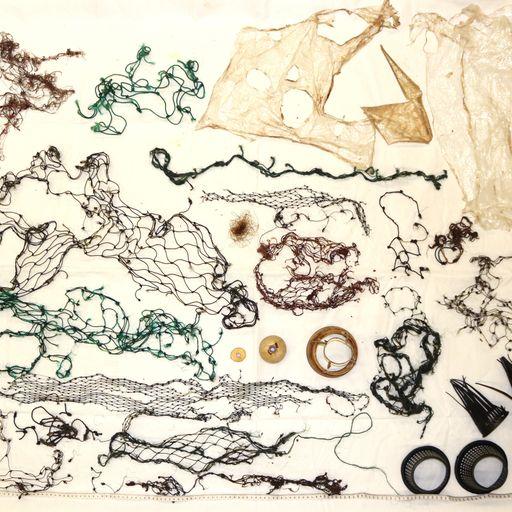(Images--above and at bottom--of marine debris from sperm whale belly, courtesy UH Health and Stranding Lab.)
If you’re a fish or a turtle or most any kind of marine life
feeding in the Pacific, it’s hard to avoid the plastic.
Almost all of the sea’s creatures end up ingesting some of
it, and that includes the massive (56 feet, 50ish tons) sperm whale that washed
up at Lydgate Park last week.
The Ocean Cleanup estimates 5 trillion bits of plastic in
the ocean.
And 1.8 trillion bits in the Great Pacific Garbage Patch,
that vast gyre that runs roughly between Hawai’i and the Aleutians and
California.
The World Economic Forum estimates the ocean has 75 to 199 million tons of plastic.
So if a critter opens its mouth to take a bite of food, it’s
hard to miss getting some plastic as well.
And they do.
There are microplastics in squid.
Plastics in all species of marine turtles.
Plastics in tuna, including canned tuna meat.
Plastics in many kinds of seabirds.
The Maritime Aquarium in Connecticut estimates that by 2050,
the way we’re going, there will be more plastic in the ocean than fish.
So, no surprise when an adult sperm whale washed ashore dead
last week, it had a bellyful. Of plastic.
“A major finding was the number of manufactured items in the
whale’s stomach,” said Dr. Kristi West, director of the University of Hawaiʻi
at Mānoa Health and Stranding Lab. It could have been enough plastic to cause a
blockage, and could have contributed to the whale’s death, West said.
In addition to squid beaks and fish skeletons and other
natural food remains, they found chunks of plastic netting, plastic bags, bits
of rope, monofilament fishing line, a fishing net float, and several of the odd
cone-shaped black plastic devices that are the doors to hagfish traps.
This is shocking, but it isn’t news. Whales of many species,
including sperm whales, have been stranding all around the world with plastic
in their guts. And the filter-feeding Humpback whales that seasonally slap and leap around Hawai'i are not exempt, although they tend to ingest tinier bits of plastic.
The study into the cause of the Lydgate whale’s death will continue with laboratory analysis
of organ and other body parts, and it may be a long time before a firm cause of
its demise is established, if it is.
And as for the plastics, where does it all come from?
Certainly a lot from fishing operations—some of the ropes, and monofilament,
and nets, and hagfish traps and plastic floats. But it’s estimated far more
comes from the land—blowing off the shore, sluicing down storm drains and, the
biggest source, washing down big rivers.
© Jan TenBruggencate 2023












No comments:
Post a Comment